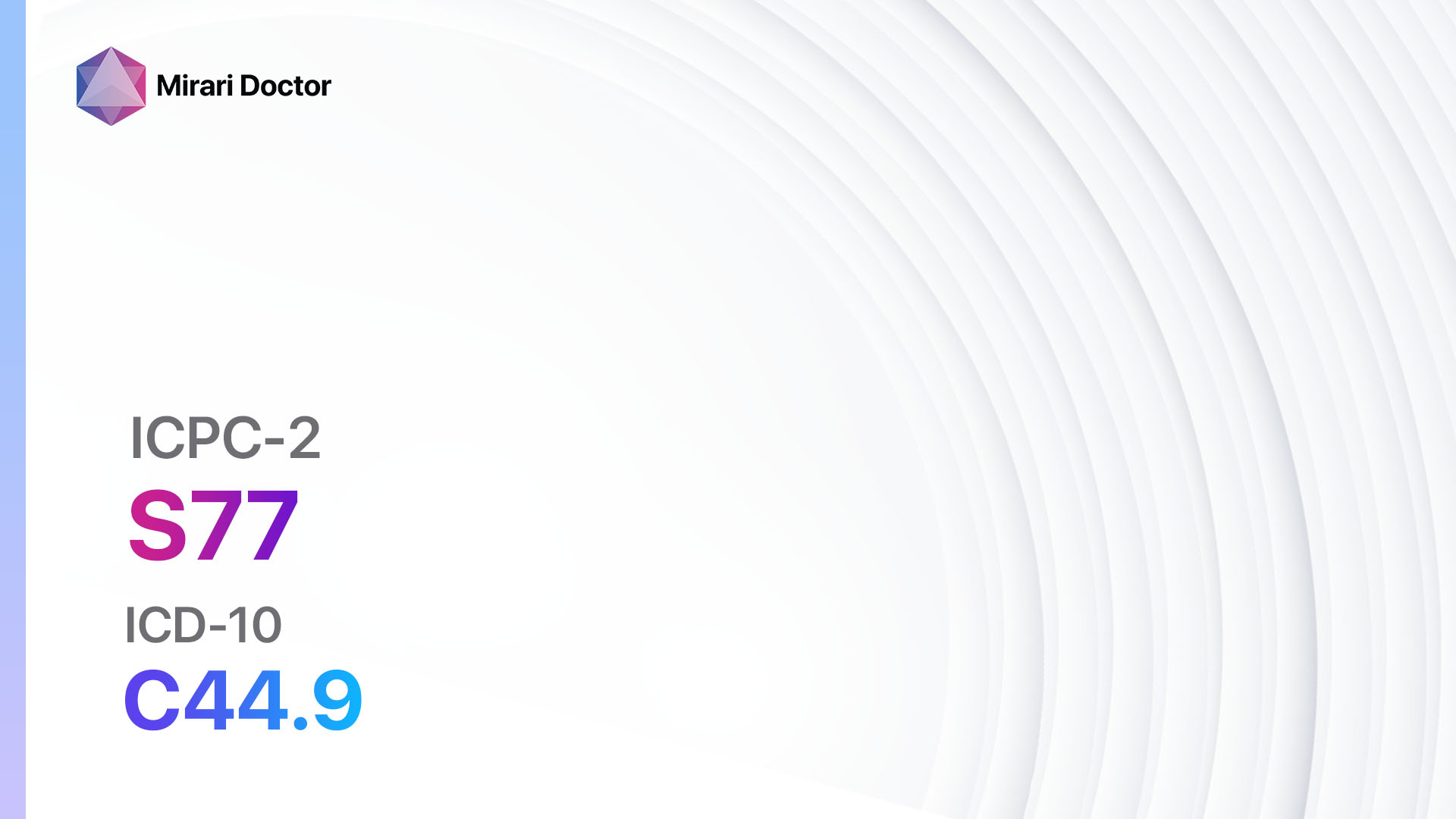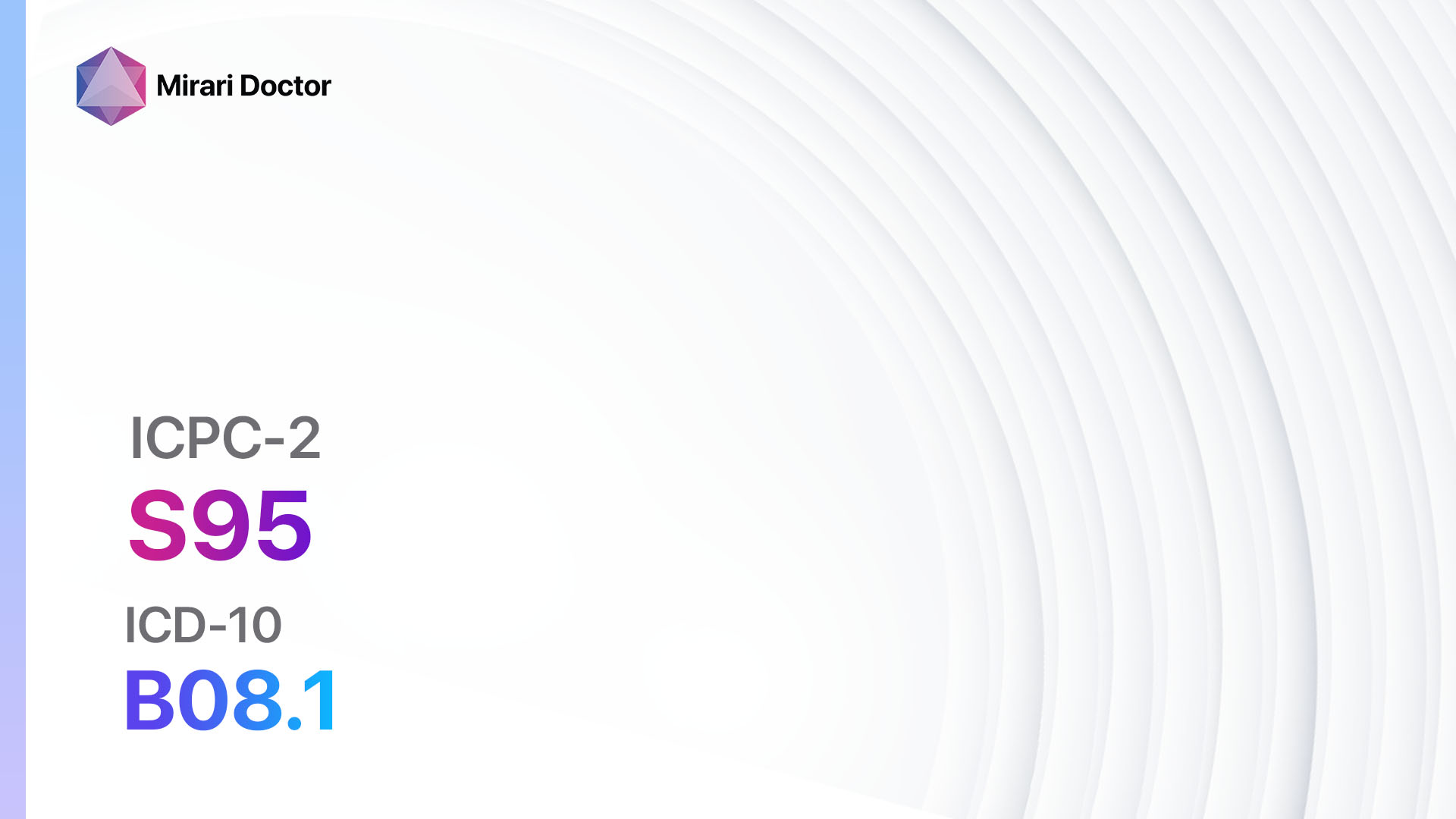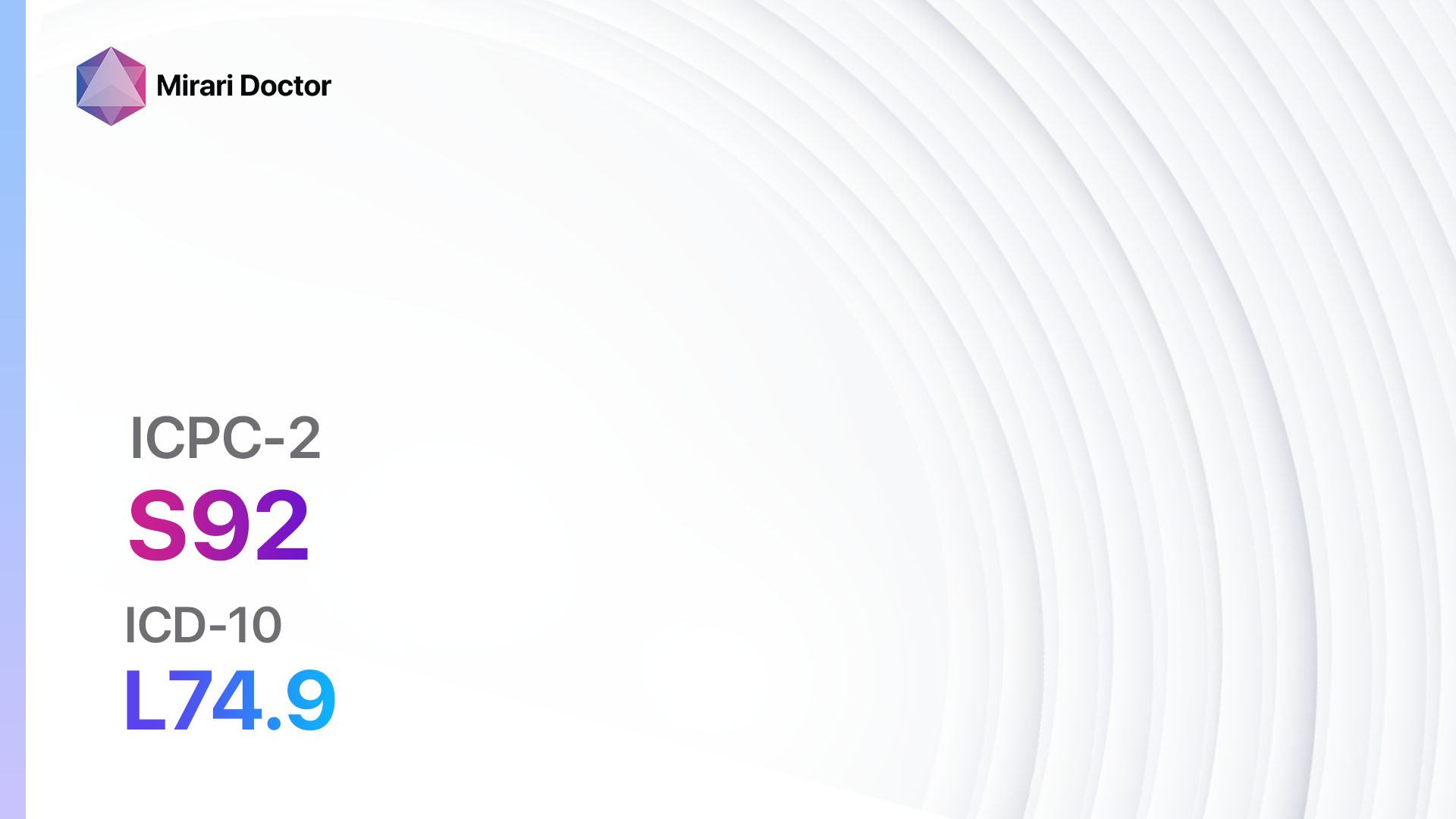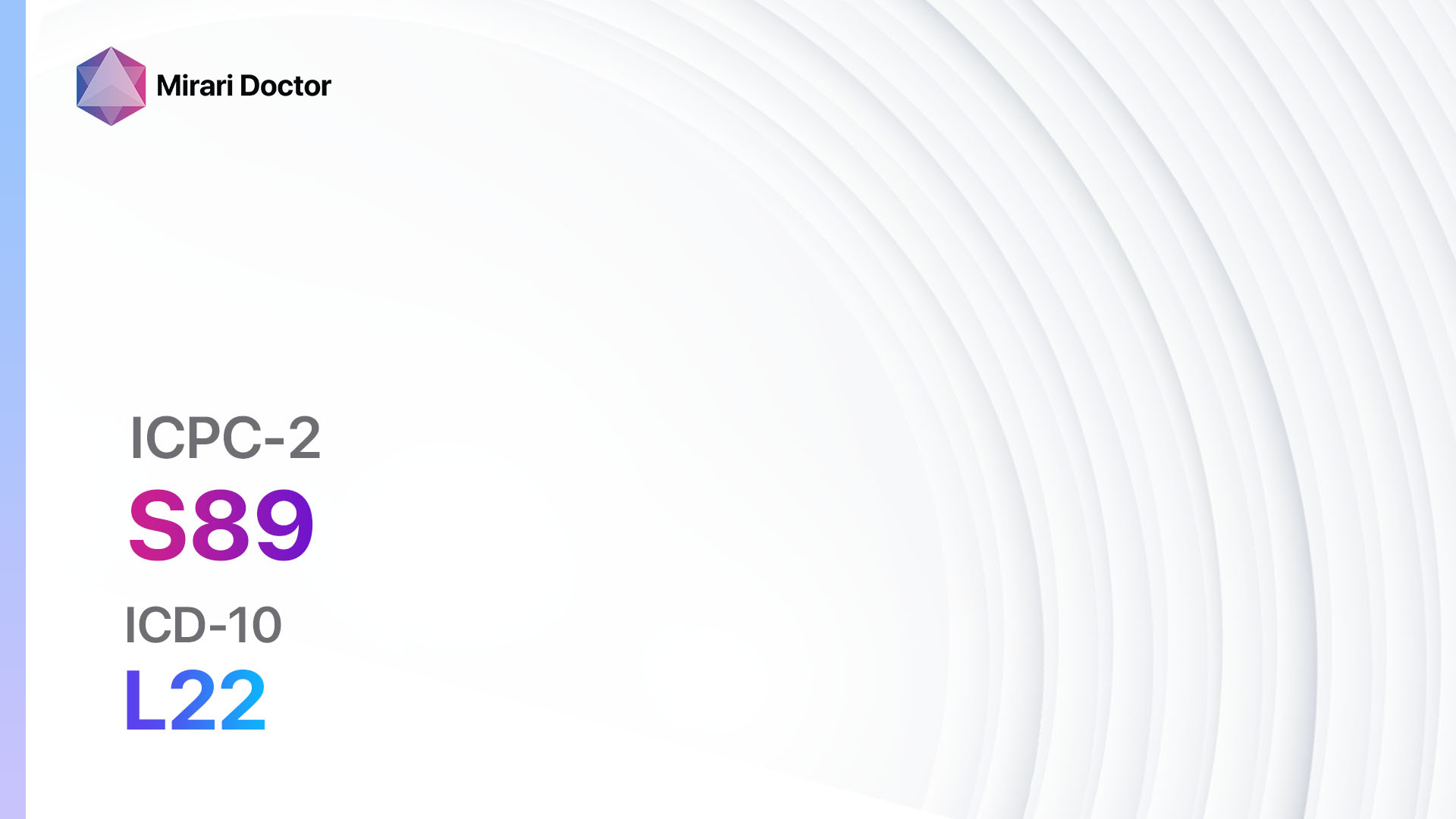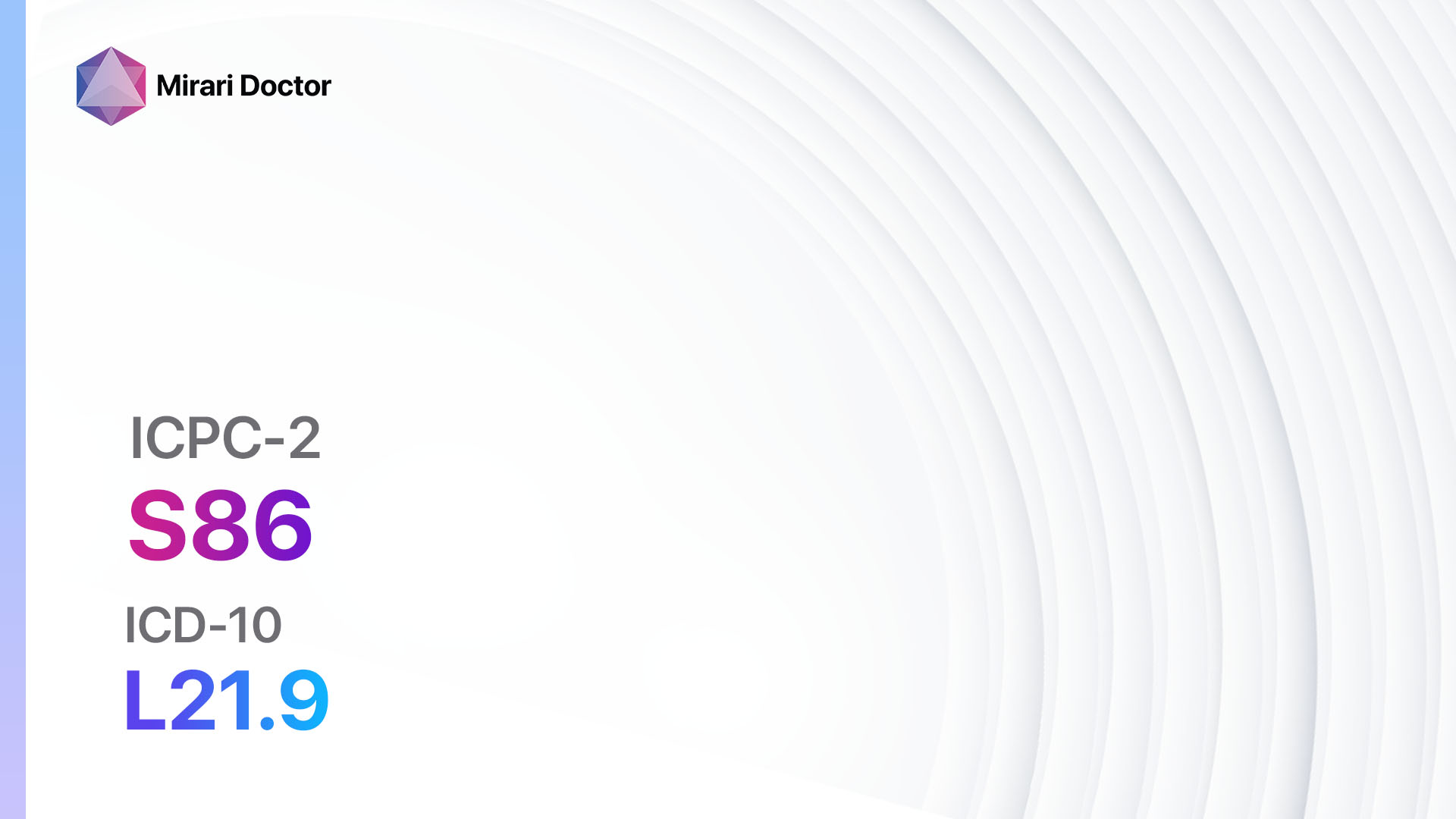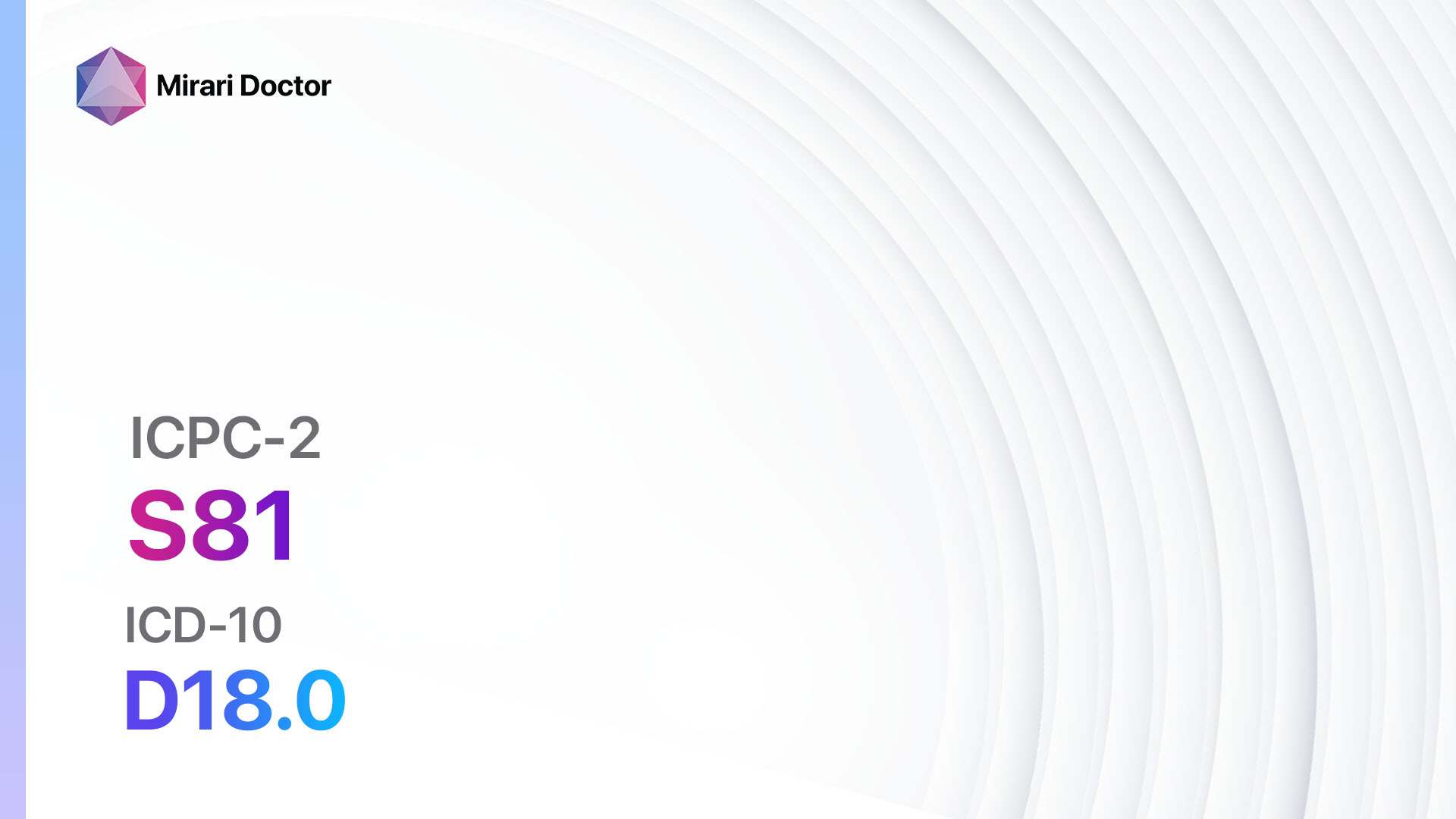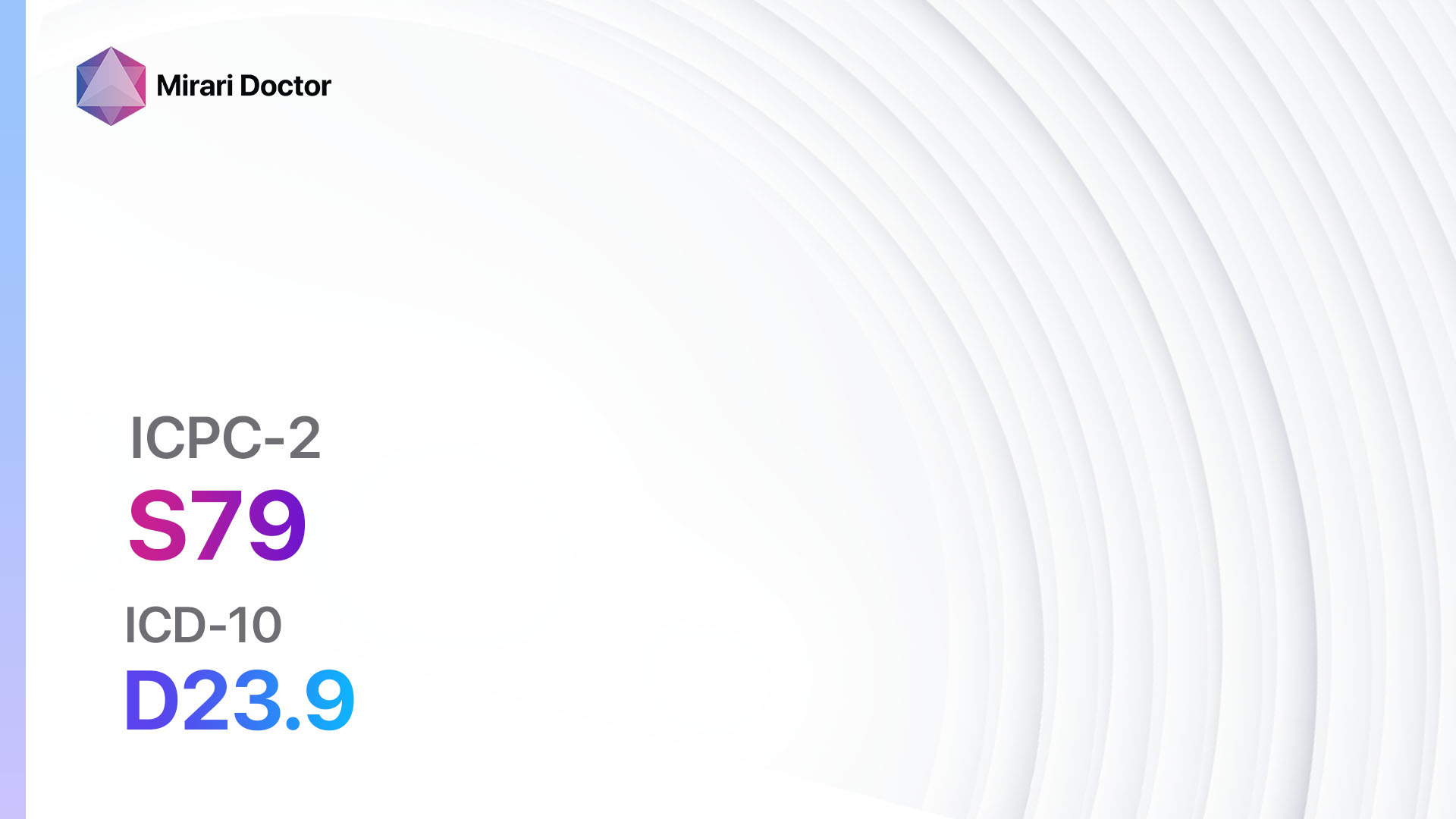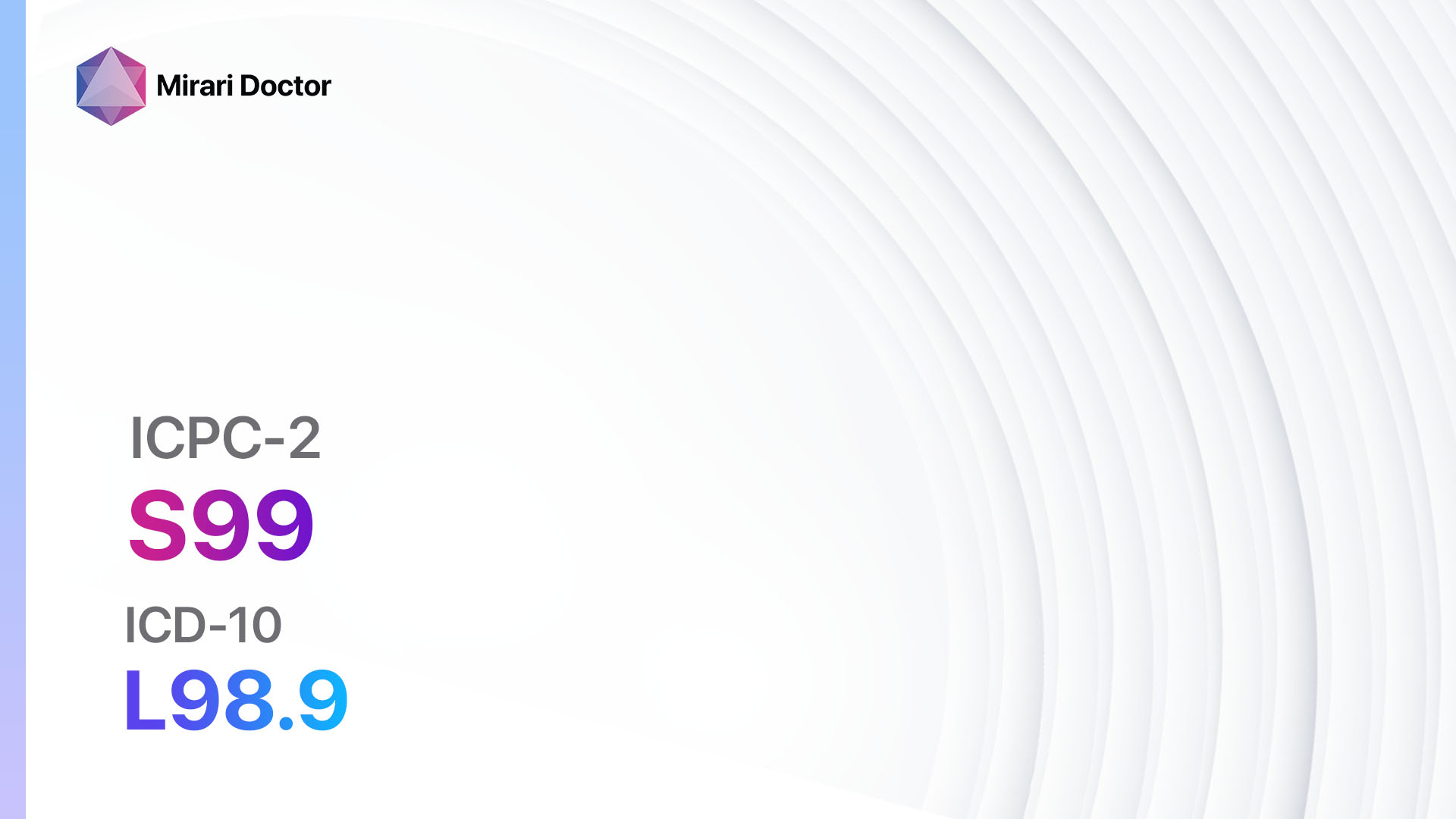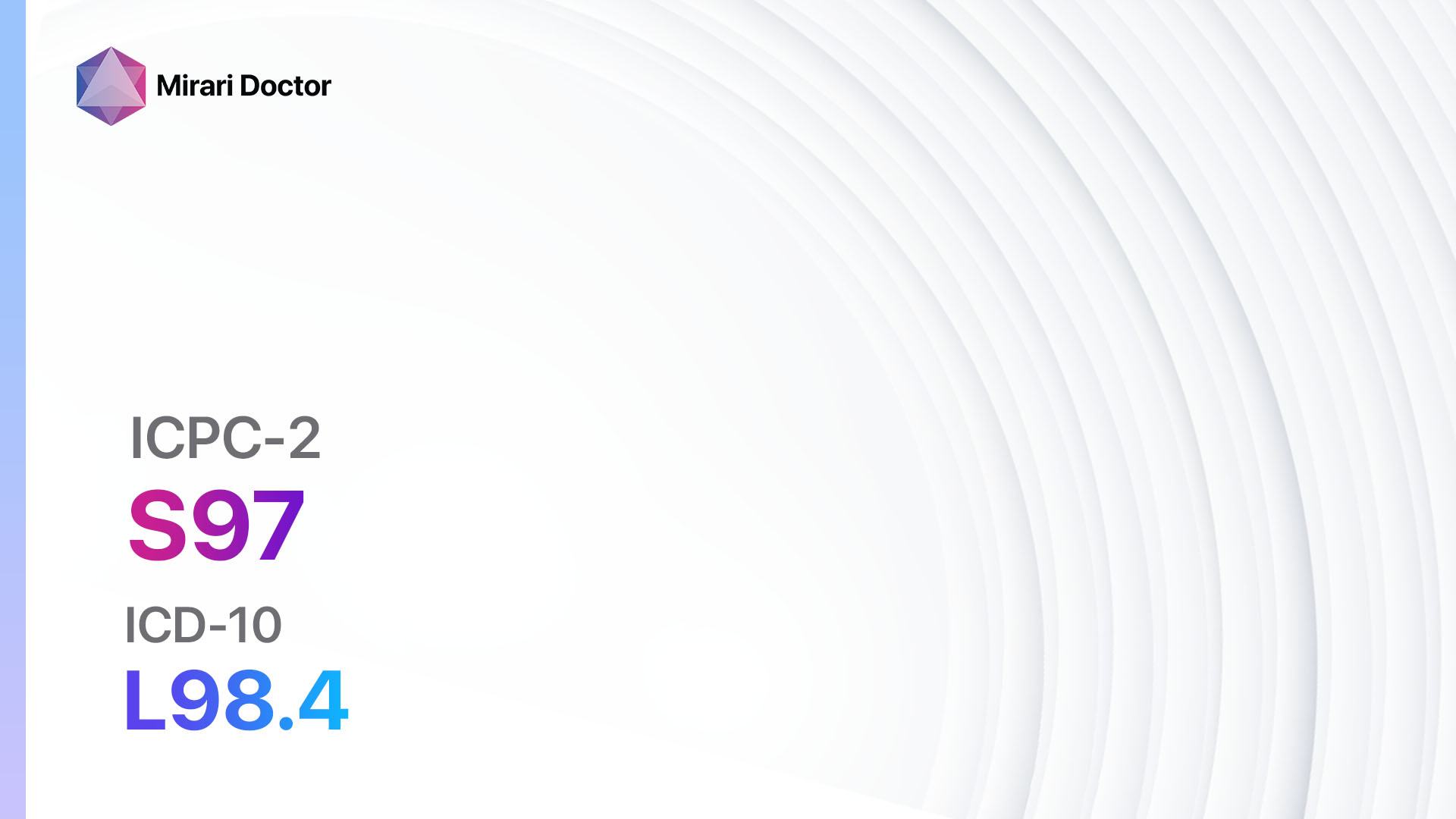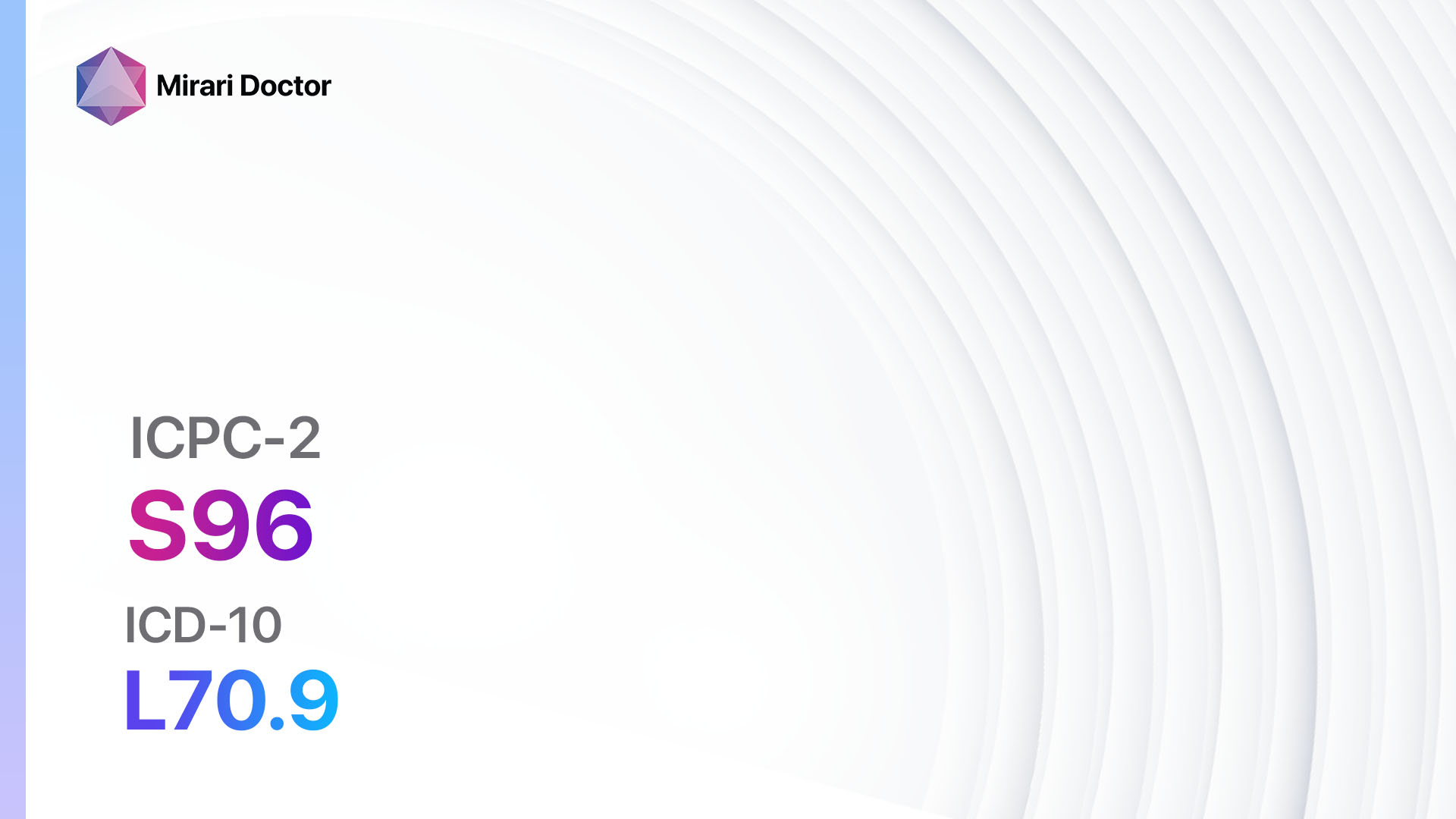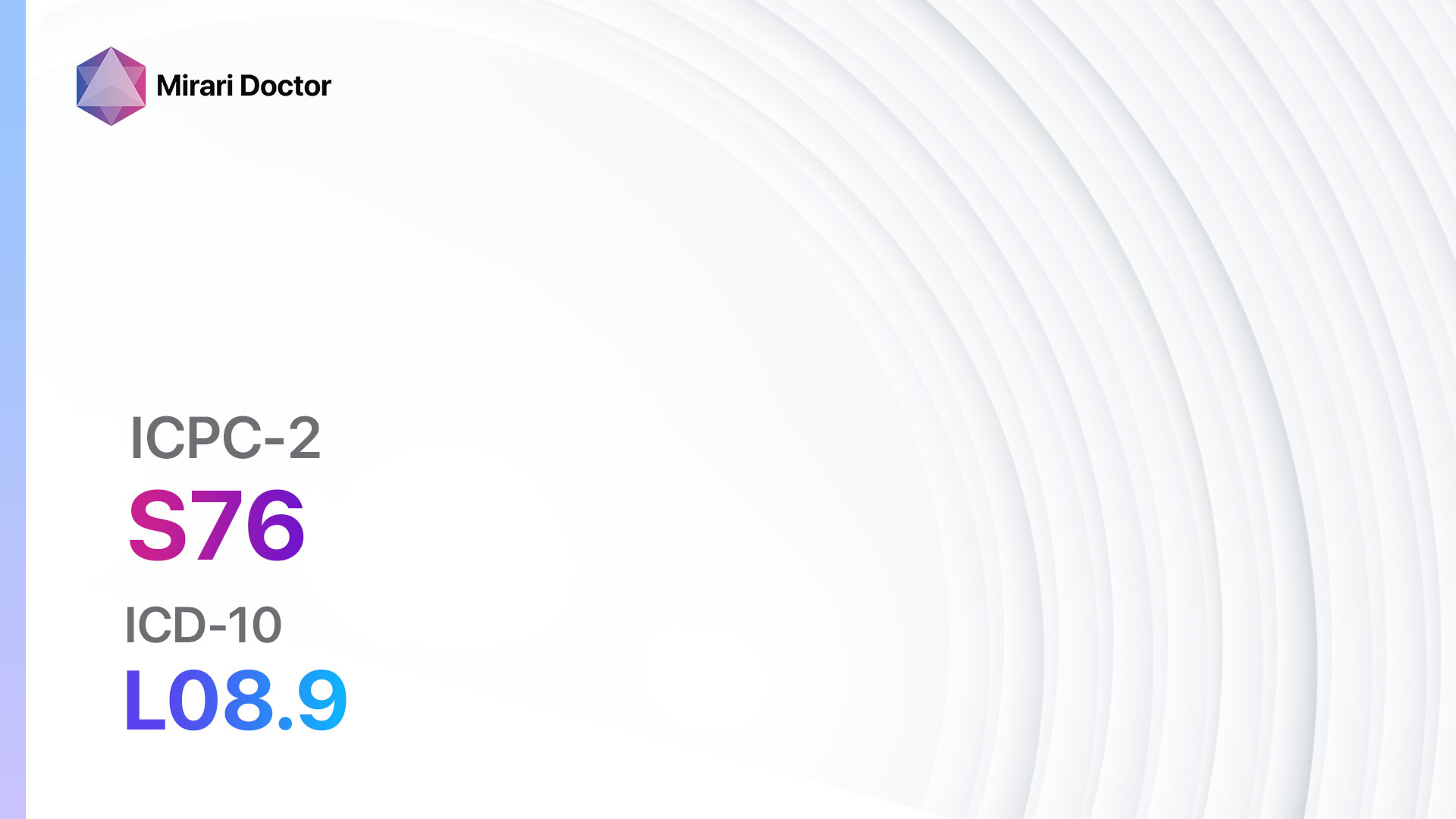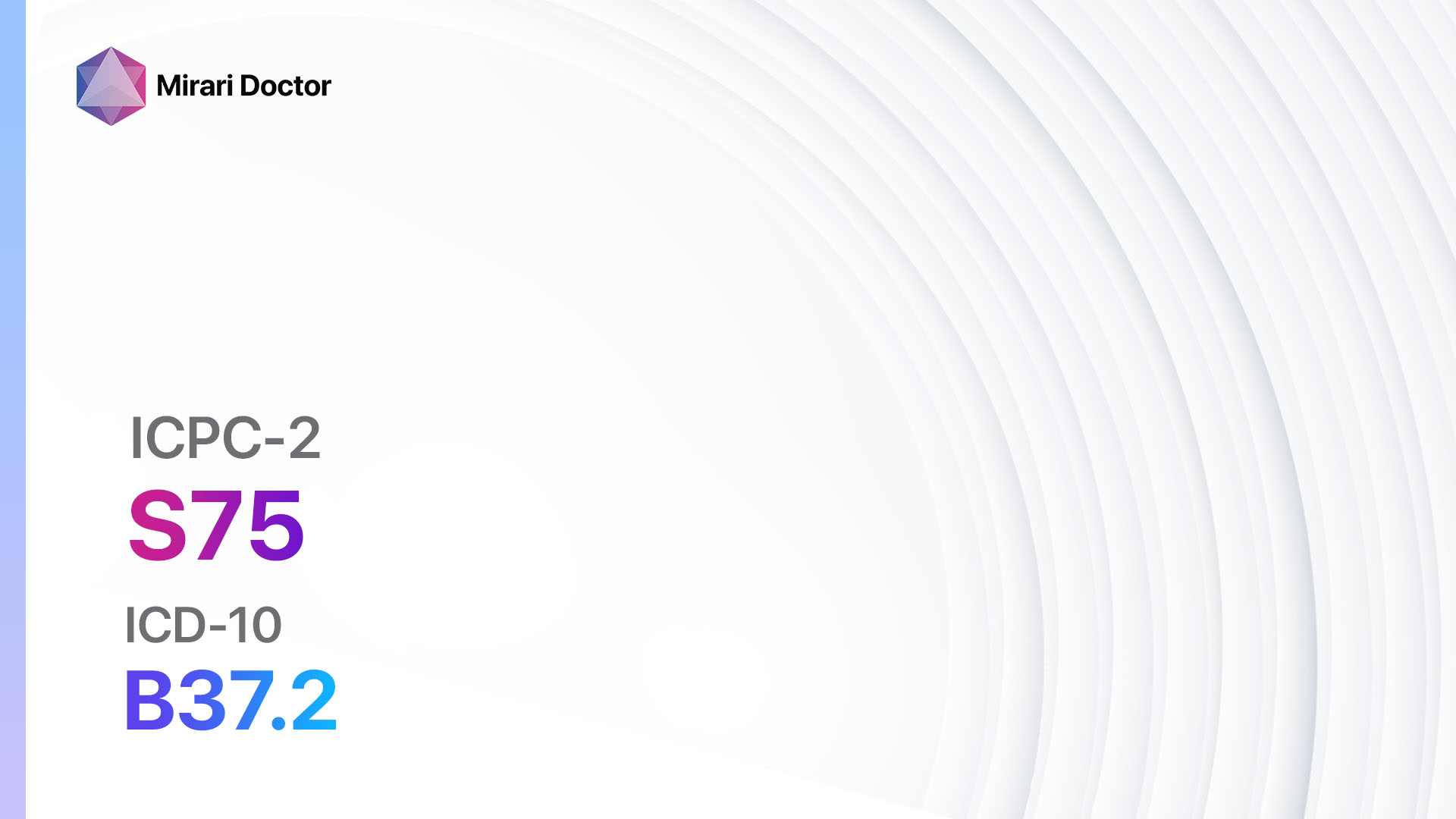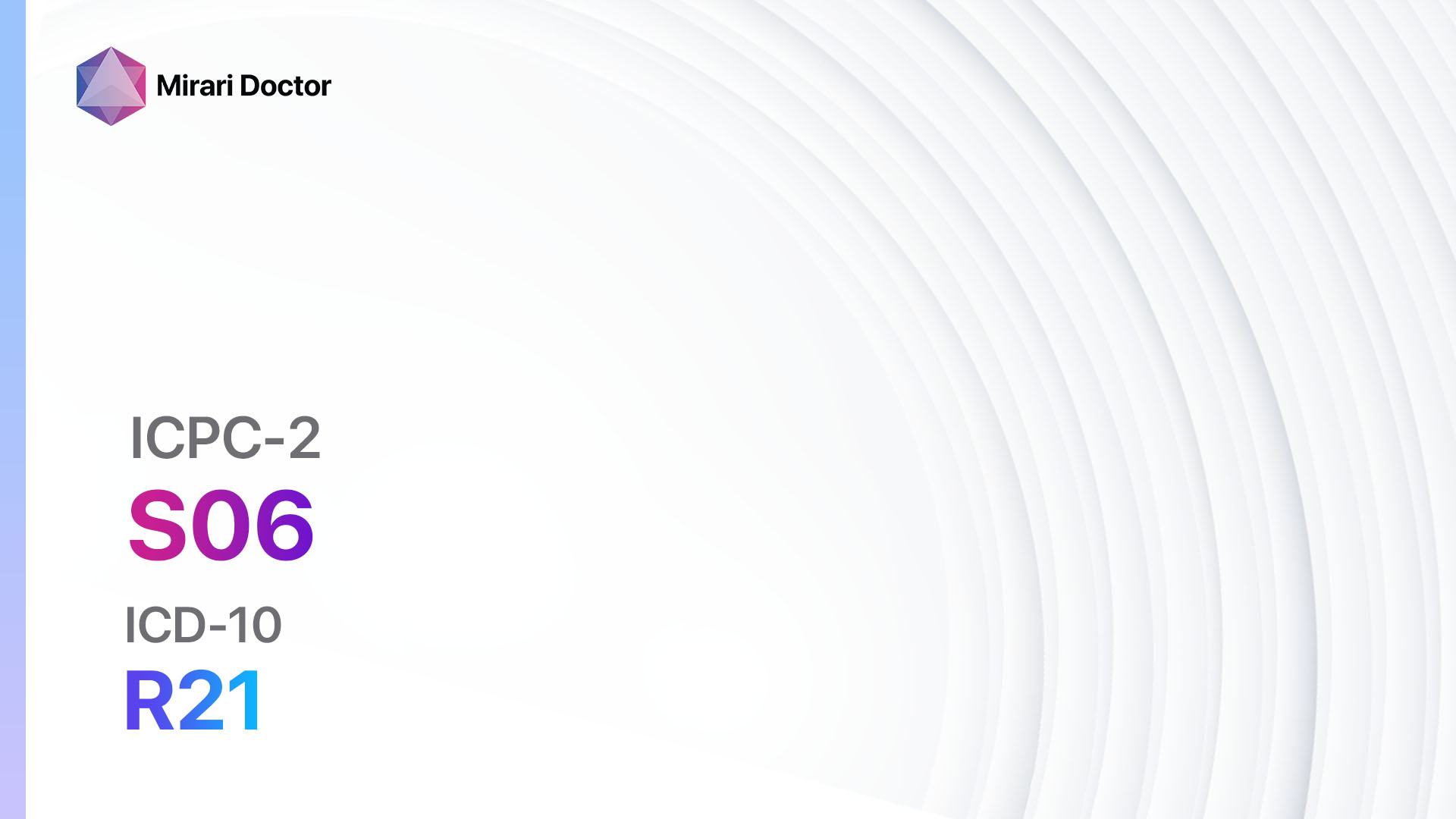
Introduction
Rash localized refers to a skin condition characterized by the presence of a rash in a specific area of the body. It can be caused by various factors, including allergies, infections, or underlying medical conditions.[1] The aim of this guide is to provide a comprehensive overview of the diagnostic steps and possible interventions for rash localized.
Codes
Symptoms
- Redness and inflammation in the affected area
- Itching or burning sensation
- Presence of small bumps or blisters
- Dry or scaly skin
- Pain or discomfort in the affected area[3]
Causes
- Allergic reactions to certain substances, such as medications, cosmetics, or detergents
- Infections, including fungal, bacterial, or viral infections
- Autoimmune disorders, such as psoriasis or eczema
- Contact dermatitis due to direct contact with irritants or allergens
- Insect bites or stings[4]
Diagnostic Steps
Medical History
- Gather information about the patient’s medical history, including any known allergies, previous skin conditions, or recent exposure to potential irritants or allergens.
- Ask about the duration and progression of the rash, as well as any associated symptoms, such as fever or pain.
- Inquire about any recent travel or exposure to infectious agents.[5]
Physical Examination
- Perform a thorough physical examination of the affected area, noting the characteristics of the rash, such as its appearance, distribution, and any associated signs, such as swelling or oozing.
- Check for any signs of infection, such as warmth, tenderness, or pus.
- Assess the patient’s overall skin condition, looking for any other areas of involvement or underlying skin disorders.[6]
Determine Severity
- Classify the rash based on severity and depth, if applicable:
- Mild: Minimal redness and itching, no significant impact on daily activities.
- Moderate: Increased redness and itching, mild discomfort, some interference with daily activities.
- Severe: Intense redness and itching, significant pain or discomfort, inability to perform daily activities.[7]
Laboratory Tests
- Blood tests: May be performed to check for underlying infections or autoimmune disorders.
- Skin biopsy: In some cases, a small sample of the affected skin may be taken for further analysis to determine the cause of the rash.[8]
Diagnostic Imaging
- In most cases, diagnostic imaging is not necessary for the diagnosis of a localized rash. However, in certain situations, imaging modalities such as X-rays, ultrasound, CT scans, or MRIs may be used to assess the extent of involvement or rule out underlying conditions.[9]
Other Tests
- Patch testing: Used to identify specific allergens that may be causing the rash.
- Skin scraping or culture: If a fungal or bacterial infection is suspected, a sample may be taken for laboratory analysis.
- Viral swab: If a viral infection is suspected, a swab may be taken from the affected area for further testing.[10]
Follow-up and Patient Education
- Schedule a follow-up appointment to monitor the progress of the rash and adjust treatment if necessary.
- Provide patient education on proper skin care, including avoiding irritants or allergens, keeping the affected area clean and dry, and using appropriate topical medications as prescribed.
Possible Interventions
Traditional Interventions
Medications:
Top 5 drugs for localized rash:
- Topical corticosteroids (e.g., hydrocortisone, betamethasone):
- Cost: Generic versions can range from $5 to $30 per tube.
- Contraindications: Hypersensitivity to corticosteroids, active infection in the affected area.
- Side effects: Thinning of the skin, skin discoloration, increased risk of infection.
- Severe side effects: Adrenal suppression, Cushing’s syndrome.
- Drug interactions: None significant.
- Warning: Prolonged use may lead to skin atrophy or other local side effects.
- Antihistamines (e.g., cetirizine, loratadine):
- Cost: Generic versions can range from $5 to $20 per box.
- Contraindications: Hypersensitivity to antihistamines, narrow-angle glaucoma.
- Side effects: Drowsiness, dry mouth, blurred vision.
- Severe side effects: None significant.
- Drug interactions: Sedatives, alcohol.
- Warning: May cause drowsiness, avoid driving or operating machinery.
- Topical antibiotics (e.g., mupirocin, neomycin):
- Cost: Generic versions can range from $5 to $20 per tube.
- Contraindications: Hypersensitivity to antibiotics, fungal or viral infections.
- Side effects: Local skin irritation, allergic reactions.
- Severe side effects: None significant.
- Drug interactions: None significant.
- Warning: Prolonged use may lead to antibiotic resistance.
- Antifungal creams (e.g., clotrimazole, miconazole):
- Cost: Generic versions can range from $5 to $20 per tube.
- Contraindications: Hypersensitivity to antifungals, bacterial or viral infections.
- Side effects: Local skin irritation, allergic reactions.
- Severe side effects: None significant.
- Drug interactions: None significant.
- Warning: Prolonged use may lead to fungal resistance.
- Oral antibiotics (e.g., doxycycline, cephalexin):
- Cost: Generic versions can range from $10 to $50 per course.
- Contraindications: Hypersensitivity to antibiotics, pregnancy, breastfeeding.
- Side effects: Upset stomach, diarrhea, allergic reactions.
- Severe side effects: Severe allergic reactions, Clostridium difficile infection.
- Drug interactions: Oral contraceptives, antacids.
- Warning: Finish the full course of antibiotics as prescribed.
Surgical Procedures:
- In most cases, surgical procedures are not necessary for the treatment of localized rash. However, in rare cases where there is an underlying abscess or collection of pus, incision and drainage may be required.
Alternative Interventions
- Aloe vera gel: Apply aloe vera gel to the affected area to soothe and moisturize the skin. Cost: $5-$20 per bottle.
- Oatmeal baths: Take a bath with colloidal oatmeal to relieve itching and inflammation. Cost: $10-$20 per box.
- Cold compress: Apply a cold compress or ice pack to the affected area to reduce redness and inflammation. Cost: $5-$10 per pack.
- Calamine lotion: Apply calamine lotion to the rash to relieve itching and dry out any blisters. Cost: $5-$10 per bottle.
- Tea tree oil: Dilute tea tree oil and apply it to the affected area to help fight against fungal or bacterial infections. Cost: $5-$15 per bottle.
Lifestyle Interventions
- Avoid known irritants or allergens that may trigger the rash.
- Keep the affected area clean and dry.
- Wear loose-fitting clothing made of breathable fabrics.
- Use mild, fragrance-free soaps and moisturizers.
- Avoid scratching or picking at the rash to prevent further irritation or infection.
It is important to note that the cost ranges provided are approximate and may vary depending on the location and availability of the interventions.
Mirari Cold Plasma Alternative Intervention
Understanding Mirari Cold Plasma
- Safe and Non-Invasive Treatment: Mirari Cold Plasma is a safe and non-invasive treatment option for various skin conditions. It does not require incisions, minimizing the risk of scarring, bleeding, or tissue damage.
- Efficient Extraction of Foreign Bodies: Mirari Cold Plasma facilitates the removal of foreign bodies from the skin by degrading and dissociating organic matter, allowing easier access and extraction.
- Pain Reduction and Comfort: Mirari Cold Plasma has a local analgesic effect, providing pain relief during the treatment, making it more comfortable for the patient.
- Reduced Risk of Infection: Mirari Cold Plasma has antimicrobial properties, effectively killing bacteria and reducing the risk of infection.
- Accelerated Healing and Minimal Scarring: Mirari Cold Plasma stimulates wound healing and tissue regeneration, reducing healing time and minimizing the formation of scars.
Mirari Cold Plasma Prescription
Video instructions for using Mirari Cold Plasma Device – S06 Rash localized (ICD-10:R21)
| Mild | Moderate | Severe |
| Mode setting: 1 (Infection) Location: 0 (Localized) Morning: 15 minutes, Evening: 15 minutes |
Mode setting: 1 (Infection) Location: 0 (Localized) Morning: 30 minutes, Lunch: 30 minutes, Evening: 30 minutes |
Mode setting: 1 (Infection) Location: 0 (Localized) Morning: 30 minutes, Lunch: 30 minutes, Evening: 30 minutes |
| Mode setting: 2 (Wound Healing) Location: 0 (Localized) Morning: 15 minutes, Evening: 15 minutes |
Mode setting: 2 (Wound Healing) Location: 0 (Localized) Morning: 30 minutes, Lunch: 30 minutes, Evening: 30 minutes |
Mode setting: 2 (Wound Healing) Location: 0 (Localized) Morning: 30 minutes, Lunch: 30 minutes, Evening: 30 minutes |
| Mode setting: 10 (Dermatitis/Fungus) Location: 0 (Localized) Morning: 15 minutes, Evening: 15 minutes |
Mode setting: 10 (Dermatitis/Fungus) Location: 0 (Localized) Morning: 30 minutes, Lunch: 30 minutes, Evening: 30 minutes |
Mode setting: 10 (Dermatitis/Fungus) Location: 0 (Localized) Morning: 30 minutes, Lunch: 30 minutes, Evening: 30 minutes |
| Total Morning: 45 minutes approx. $7.50 USD, Evening: 45 minutes approx. $7.50 USD |
Total Morning: 90 minutes approx. $15 USD, Lunch: 90 minutes approx. $15 USD, Evening: 90 minutes approx. $15 USD, |
Total Morning: 90 minutes approx. $15 USD, Lunch: 90 minutes approx. $15 USD, Evening: 90 minutes approx. $15 USD, |
| Usual treatment for 7-60 days approx. $105 USD – $900 USD | Usual treatment for 6-8 weeks approx. $1,890 USD – $2,520 USD |
Usual treatment for 3-6 months approx. $4,050 USD – $8,100 USD
|
 |
|
Use the Mirari Cold Plasma device to treat Rash localized effectively.
WARNING: MIRARI COLD PLASMA IS DESIGNED FOR THE HUMAN BODY WITHOUT ANY ARTIFICIAL OR THIRD PARTY PRODUCTS. USE OF OTHER PRODUCTS IN COMBINATION WITH MIRARI COLD PLASMA MAY CAUSE UNPREDICTABLE EFFECTS, HARM OR INJURY. PLEASE CONSULT A MEDICAL PROFESSIONAL BEFORE COMBINING ANY OTHER PRODUCTS WITH USE OF MIRARI.
Step 1: Cleanse the Skin
- Start by cleaning the affected area of the skin with a gentle cleanser or mild soap and water. Gently pat the area dry with a clean towel.
Step 2: Prepare the Mirari Cold Plasma device
- Ensure that the Mirari Cold Plasma device is fully charged or has fresh batteries as per the manufacturer’s instructions. Make sure the device is clean and in good working condition.
- Switch on the Mirari device using the power button or by following the specific instructions provided with the device.
- Some Mirari devices may have adjustable settings for intensity or treatment duration. Follow the manufacturer’s instructions to select the appropriate settings based on your needs and the recommended guidelines.
Step 3: Apply the Device
- Place the Mirari device in direct contact with the affected area of the skin. Gently glide or hold the device over the skin surface, ensuring even coverage of the area experiencing.
- Slowly move the Mirari device in a circular motion or follow a specific pattern as indicated in the user manual. This helps ensure thorough treatment coverage.
Step 4: Monitor and Assess:
- Keep track of your progress and evaluate the effectiveness of the Mirari device in managing your Rash localized. If you have any concerns or notice any adverse reactions, consult with your health care professional.
Note
This guide is for informational purposes only and should not replace the advice of a medical professional. Always consult with your healthcare provider or a qualified medical professional for personal advice, diagnosis, or treatment. Do not solely rely on the information presented here for decisions about your health. Use of this information is at your own risk. The authors of this guide, nor any associated entities or platforms, are not responsible for any potential adverse effects or outcomes based on the content.
Mirari Cold Plasma System Disclaimer
- Purpose: The Mirari Cold Plasma System is a Class 2 medical device designed for use by trained healthcare professionals. It is registered for use in Thailand and Vietnam. It is not intended for use outside of these locations.
- Informational Use: The content and information provided with the device are for educational and informational purposes only. They are not a substitute for professional medical advice or care.
- Variable Outcomes: While the device is approved for specific uses, individual outcomes can differ. We do not assert or guarantee specific medical outcomes.
- Consultation: Prior to utilizing the device or making decisions based on its content, it is essential to consult with a Certified Mirari Tele-Therapist and your medical healthcare provider regarding specific protocols.
- Liability: By using this device, users are acknowledging and accepting all potential risks. Neither the manufacturer nor the distributor will be held accountable for any adverse reactions, injuries, or damages stemming from its use.
- Geographical Availability: This device has received approval for designated purposes by the Thai and Vietnam FDA. As of now, outside of Thailand and Vietnam, the Mirari Cold Plasma System is not available for purchase or use.
References
- Habif TP. Clinical Dermatology: A Color Guide to Diagnosis and Therapy. 6th ed. St. Louis, MO: Elsevier; 2016.
- World Health Organization. International Statistical Classification of Diseases and Related Health Problems, 10th Revision (ICD-10). Geneva: WHO; 2019.
- Kang S, Amagai M, Bruckner AL, et al. Fitzpatrick’s Dermatology. 9th ed. New York, NY: McGraw-Hill Education; 2019.
- Usatine RP, Riojas M, Stulberg DL, Pfenninger JL. Color Atlas of Family Medicine. 3rd ed. New York, NY: McGraw-Hill Education; 2018.
- Bolognia JL, Schaffer JV, Cerroni L. Dermatology. 4th ed. Philadelphia, PA: Elsevier; 2018.
- Wolff K, Johnson RA, Saavedra AP, Roh EK. Fitzpatrick’s Color Atlas and Synopsis of Clinical Dermatology. 8th ed. New York, NY: McGraw-Hill Education; 2017.
- Goldsmith LA, Katz SI, Gilchrest BA, Paller AS, Leffell DJ, Wolff K. Fitzpatrick’s Dermatology in General Medicine. 8th ed. New York, NY: McGraw-Hill Education; 2012.
- Elston DM, Ferringer T, Ko CJ, Peckham S, High WA, DiCaudo DJ. Dermatopathology. 3rd ed. Philadelphia, PA: Elsevier; 2019.
- Weston WL, Lane AT, Morelli JG. Color Textbook of Pediatric Dermatology. 5th ed. St. Louis, MO: Mosby; 2017.
- James WD, Elston DM, Treat JR, Rosenbach MA, Neuhaus IM. Andrews’ Diseases of the Skin: Clinical Dermatology. 13th ed. Philadelphia, PA: Elsevier; 2020.
Related articles
Made in USA



